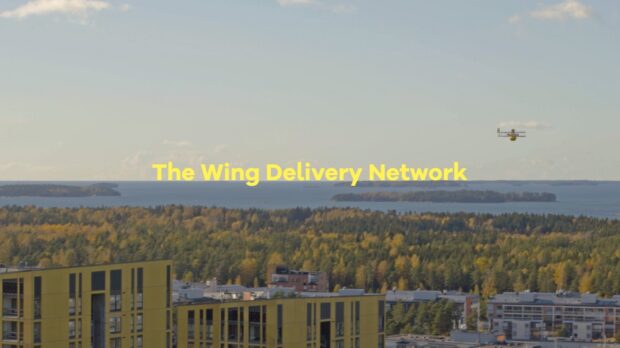Companies around the world have been working for over a decade to develop drone technologies that will work together with ground transportation to greatly improve last-mile delivery. Wing’s ultimate vision is to deliver people’s packages more efficiently and safely as part of an automated logistics system that routinely moves packages by the millions.
The economics of drone delivery improve dramatically with scale, and all of the salient metrics (access, safety, and sustainability) become far more meaningful at large volumes.
Up to this point, the industry has been fixated on drones themselves — designing, testing, and iterating on aircraft, rather than finding the best way to harness an entire fleet for efficient delivery. Wing’s approach to delivery is different. We see drone delivery at scale looking more like an efficient data network than a traditional transportation system. As with many other areas of technology, from data centers to smartphones, the physical hardware is only as useful as the software and logistics networks that make it meaningful for organizations and their customers.
Wing has worked in recent years to enable our drone delivery to integrate seamlessly with existing delivery infrastructure for restaurants and retailers. We’ve launched delivery services from parking lots and rooftops, and integrated with well-known delivery apps. We’ve moved as many as one thousand packages per day in a delivery region of more than 100,000 people.
Wing Delivery Network
All of these R&D and commercial operations efforts have largely been directed toward the development of a logistics platform we call Wing Delivery Network – a decentralized, automated system that can support high-volume drone delivery across a major metro area or a more sparsely populated region.
The network is managed by logistics automation software that constantly allocates hardware resources at a city or metro-wide scale. The software manages three basic hardware elements: (1) Delivery drones, (2) “Pads,” where drones takeoff, land, and recharge their batteries between trips and (3) “AutoLoaders” that allow our partners to preload packages for automatic pickup.
Curbside Pickup by Drone
Wing Delivery Network’s lightweight infrastructure makes it easy to integrate into existing retail operations and support them in interesting new ways. Our AutoLoader allows our delivery drones to perform what has become a tremendously popular service – curbside pickup – on the consumer’s behalf, with no additional work (arguably even less) for store employees. The AutoLoader includes a spot where store employees can latch packages without waiting for the drone to arrive. Once the system confirms a package has been dropped off, a drone is dispatched to pick it up and then deliver it to the customer. There is no power or data connection required.
Drones within the Wing Delivery Network can pick up, drop off, travel, and charge in whatever pattern makes the most sense for the entire system. For example, with multiple charging spots, they’ll have the flexibility to meet peaks in consumer demand across entire cities. Pad locations can be added simply, with the aircraft themselves used as the surveying tools to update and expand the network.
Wing Delivery Network’s automation makes it very easy to deploy and maintain. For businesses and other organizations, building drone delivery into the last mile can be as simple as ordering drones, turning them on, and letting them connect to the network. Rather than focusing on a single aircraft or delivery, our pilots can oversee fleets of autonomous delivery drones to ensure they’re operating, and interoperating, safely and efficiently. Wing Delivery Network can also help automate compliance with regulation – each time a plane is turned on it checks that it’s in the right place, has the right software, and is ready and approved to fly.
We plan to roll out elements of Wing Delivery Network capabilities over the next 12 months, and we plan to demonstrate them in new locations around the world this year. By the middle of 2024, we expect our system to be capable of handling millions of deliveries for millions of consumers at a lower cost per delivery than ground transportation can achieve for fast delivery of small packages.

